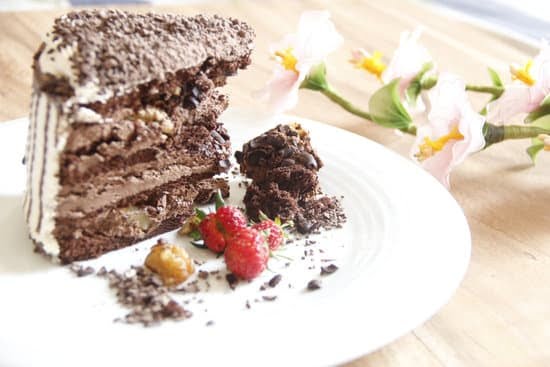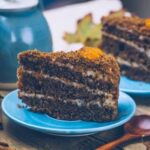Cake decorating icing is an essential element in creating beautifully decorated cakes. Whether you are a professional baker or someone who enjoys baking as a hobby, understanding the different types of icing and how to use them can take your cake decorating skills to the next level. In this article, we will explore the world of cake decorating icing, from its importance in cake decorating to the latest trends and innovations.
When it comes to cake decorating, icing serves as both a delicious topping and a versatile medium for creating stunning designs and decorations. From simple swirls and borders to intricate flowers and patterns, the right type of icing can elevate the visual appeal of any cake. Understanding the characteristics of different icings and how to work with them is crucial for achieving professional-looking results.
In the following sections, we will delve into the different types of cake decorating icing, including buttercream, fondant, royal icing, and more. We will also discuss how to choose the right icing for your specific needs, provide tips for using different types of icing, explore essential tools for cake decorating with icing, and showcase creative ways to use icing for unique designs and effects.
Additionally, we will address common issues that may arise when working with cake decorating icing and offer solutions to troubleshoot these problems effectively.
Finally, we will highlight the latest trends and innovations in cake decorating icing, including new colors, flavors, and techniques that are shaping the industry’s landscape. If you’re ready to elevate your cake decorating game with icing, keep reading for expert insights and inspiration.
Types of Cake Decorating Icing
When it comes to cake decorating, the type of icing you use can make a huge difference in the overall look and taste of your creation. There are several different types of cake decorating icing, each with its own unique properties and uses. Some of the most popular types include buttercream, fondant, royal icing, and more.
Buttercream
Buttercream is one of the most versatile and widely used types of cake decorating icing. It is made from a mixture of butter, powdered sugar, and flavorings such as vanilla or chocolate. Buttercream is known for its smooth texture and creamy taste, making it perfect for both filling and frosting cakes.
Fondant
Fondant is a type of icing that is rolled out into a thin sheet and draped over cakes for a sleek, polished finish. It has a sweet flavor and can be molded into various shapes and designs, making it ideal for creating intricate decorations on cakes.
Royal Icing
Royal icing is made from egg whites or meringue powder, powdered sugar, and water. It dries to a hard, shiny finish and is often used for intricate piping work or creating delicate details on cakes.
There are many other types of cake decorating icing available, each with its own unique properties and uses. When choosing the right icing for your cake, consider factors such as the desired appearance, flavor preferences, and the techniques you will be using to decorate the cake. By selecting the best type of icing for your specific needs, you can ensure that your cake not only looks beautiful but tastes delicious as well.
Choosing the Right Cake Decorating Icing
Flavor and Texture
When choosing the right cake decorating icing, it’s important to consider both flavor and texture. Buttercream icing is known for its rich and creamy taste, while fondant offers a smooth and clean finish. Royal icing can provide a firm and glossy surface, perfect for intricate designs. Consider the flavor profile of your cake as well as any dietary restrictions or preferences that may impact your choice of icing.
Design and Decor
The overall design of your cake should also influence your choice of decorating icing. Buttercream frosting is great for creating textured finishes and piped details, while fondant allows for smooth surfaces and intricate decorations. Royal icing is commonly used for delicate piping work or creating 3D embellishments. Consider the theme or style of your cake when selecting the right type of icing to bring your vision to life.
Environmental Factors
It’s also essential to take into account environmental factors when choosing the right cake decorating icing. For instance, buttercream may not hold up as well in hot or humid conditions compared to fondant or royal icing. If your cake will be displayed outdoors or in a warm setting, you’ll need an icing that can withstand these conditions without melting or losing its shape.
By carefully considering these factors, you can select the best type of cake decorating icing for your specific needs and create a visually stunning and delicious masterpiece that will delight all who enjoy it.
Tips for Using Cake Decorating Icing
When it comes to cake decorating icing, there are various techniques and best practices for applying and working with different types of icing that can make a significant difference in the outcome of your cake. Whether you’re using buttercream, fondant, royal icing, or any other type of icing, following these tips can help you achieve professional-looking results.
Here are some essential tips for using cake decorating icing:
- Smooth out the surface: Before applying any icing, make sure to level and crumb coat your cake to create a smooth surface for the icing. This will prevent any lumps or bumps from showing through the final layer of icing.
- Use the right consistency: Depending on the type of icing you’re using, achieving the right consistency is crucial. For example, if you’re working with buttercream, make sure it’s at a spreadable consistency but not too thin that it won’t hold its shape when piped.
- Practice piping techniques: If you’re planning to use piping bags and tips for intricate designs or borders, it’s important to practice different piping techniques beforehand to ensure precision and control over the icing flow.
By following these tips, you can improve your cake decorating skills and create beautifully decorated cakes with professional-looking results. Whether you’re a beginner or an experienced baker, mastering these techniques can elevate your cake decorating game and impress your friends and family with stunning designs created with cake decorating icing.
Cake Decorating Icing Tools
When it comes to cake decorating icing, having the right tools and equipment is crucial for achieving professional-looking results. Whether you’re working with buttercream, fondant, royal icing, or any other type of icing, having the right tools can make the process much easier and more enjoyable. Here are some essential cake decorating icing tools that every baker should have in their arsenal:
- Piping Bags: Piping bags are a must-have tool for cake decorating icing. They allow for precise application of icing and come in various sizes and materials.
- Piping Tips: A variety of piping tips is essential for creating different designs and textures with your cake decorating icing. From stars and rosettes to leaves and basketweave patterns, the possibilities are endless with the right set of piping tips.
- Offset Spatula: An offset spatula is great for spreading and smoothing out icing on cakes and creating clean, sharp edges. It’s also useful for lifting and transferring delicate decorations onto the cake.
- Fondant Smoother: If you work with fondant icing, a fondant smoother is indispensable for achieving a smooth, flawless finish on your cakes. It helps eliminate air bubbles and creases while shaping and smoothing out the fondant.
- Turntable: A turntable makes it easier to decorate cakes from all angles without having to constantly lift and rotate the cake by hand. It allows for smooth, seamless application of icing and decorations.
Having these essential cake decorating icing tools in your collection will set you up for success when working on your next baking project. Additionally, investing in high-quality tools can make a significant difference in the outcome of your cakes.
Whether you’re a seasoned professional or just starting out with cake decorating, having the right tools can elevate your skills and help you achieve stunning results with your cake decorating icing. By choosing the appropriate tools based on the type of icing you’re using and the design you want to create, you’ll be well-equipped to bring your cake decorating ideas to life.
From simple buttercream swirls to intricate fondant designs, having a well-stocked toolbox will empower bakers to explore their creativity and achieve beautiful results with their cake decorating icing. And as new tools and equipment continue to emerge in the market, staying updated on the latest trends can open up new possibilities for innovative cake decoration techniques.
Creative Ways to Use Cake Decorating Icing
Cake decorating icing is not just for covering a cake; it can also be used to create unique designs, patterns, and effects that add a special touch to any baked creation. From intricate piping techniques to stunning fondant decorations, there are countless creative ways to use cake decorating icing. Whether you’re a beginner or an experienced baker, experimenting with different icing techniques can elevate your cakes from ordinary to extraordinary.
One popular way to use cake decorating icing is through piping. This technique involves using a pastry bag and various tips to create different shapes and designs on the surface of the cake.
From delicate flowers and intricate lace patterns to personalized messages and monograms, piping with buttercream or royal icing allows for endless creativity. Fondant, a type of sugar paste often used for covering cakes, can also be shaped and molded into 3D decorations such as figurines, flowers, and even sculpted designs.
Another creative way to use cake decorating icing is through stenciling. This technique involves placing a stencil on the surface of the cake and then applying icing over it to create a pattern or design. Stenciling can result in elegant and professional-looking cakes with minimal effort. Additionally, using different colors of icing or edible food color sprays can add depth and dimension to stenciled designs.
Furthermore, cake decorating icing can be used to achieve marbling effects on cakes by blending different colors together. This technique creates a beautiful swirl pattern that adds visual interest and sophistication to the cake’s appearance. In addition, using edible glitter, metallic dragees, or other decorative elements along with the icing can further enhance its aesthetic appeal.
When it comes to creating unique designs with cake decorating icing, the possibilities are truly endless. From simple yet elegant patterns to intricate works of art, mastering different techniques for using icing can open up a world of creativity in cake decorating.
| Creative Cake Decorating Techniques | Description |
|---|---|
| Piping | Using a pastry bag and various tips to create shapes and designs on the cake |
| Stenciling | Applying icing over a stencil placed on the surface of the cake to create patterns or designs |
| Marbling | Blending different colors of icing together to create swirl patterns on the cake |
Troubleshooting Common Cake Decorating Icing Issues
Whether you are a novice or experienced cake decorator, encountering issues with cake decorating icing is inevitable. Learning how to troubleshoot and fix common problems such as air bubbles, cracks, and icing consistency is essential for creating beautifully decorated cakes.
Air bubbles in cake decorating icing can be frustrating, but they are easily avoidable with the right techniques. One common cause of air bubbles is not properly mixing the icing before use. To prevent this issue, make sure to mix your icing thoroughly and slowly to minimize the incorporation of air. If air bubbles still form, gently tap the sides of the icing container to release any trapped air before using it to decorate your cake.
Another common issue in cake decorating icing is cracks that can develop on the surface of the cake. This can occur with buttercream or fondant icing when it dries out too quickly. To prevent cracks, make sure to cover your cakes with a thin layer of simple syrup before applying the icing. Additionally, ensure that your workspace is not too hot or dry, as this can cause the icing to dry out too quickly and result in cracks.
Icing consistency is crucial for achieving smooth and even decorations on your cakes. If your icing is too runny or too thick, it can negatively impact the final look of your cake. To adjust the consistency of your icing, add small amounts of liquid (such as milk or water) to thin it out or confectioners’ sugar to thicken it as needed.
Gradually adjust the consistency until you achieve the desired texture for easy spreading and decorating. Mastering these troubleshooting techniques will ensure that you can overcome common cake decorating icing issues and create stunning cakes every time.
Cake Decorating Icing Trends
In conclusion, cake decorating icing is a crucial element in the art of cake decoration. It not only adds flavor and texture to the cake but also serves as a medium for creativity and artistic expression. With various types of icing available, including buttercream, fondant, royal icing, and more, there are endless possibilities for creating unique and stunning designs on cakes.
When choosing the right cake decorating icing, it’s important to consider factors such as the desired design, the climate, and the flavors of the cake. Each type of icing has its own set of advantages and challenges, so it’s essential to select the best one for your specific needs. Additionally, having the right tools and equipment is crucial for successful cake decorating with icing.
As we look toward the future of cake decorating icing, trends continue to evolve with new colors, flavors, and techniques emerging. Innovations in edible printing technology have opened up a world of possibilities for personalized designs on cakes.
The latest trend is using natural ingredients to create vibrant colors and unique flavors in cake decorating icing. With ongoing advancements in this field, there’s no doubt that cake decorating icing will continue to captivate bakers and enthusiasts alike by offering new avenues for creative expression.
Frequently Asked Questions
What Icing Is Best for Decorating Cakes?
The best icing for decorating cakes is royal icing. It dries hard, making it perfect for intricate designs and decorations. Its smooth texture also allows for easy piping and shaping.
What Frosting Do Professionals Use for Cakes?
Many professionals use Swiss meringue buttercream for decorating cakes. This frosting is silky, stable, and holds its shape well, making it a favorite among professional bakers and cake decorators.
Is Decorating Icing the Same as Frosting?
Decorating icing and frosting are not the same. Decorating icing, like royal icing, is often used for intricate designs and detailed decorations, while frosting tends to be creamier and used for coating the entire cake surface. Both have their own unique uses in cake decorating.

Welcome to our cake decorating blog! My name is Destiny Flores, and I am the proud owner of a cake decorating business named Cake Karma. Our mission is to provide delicious, beautiful cakes for all occasions. We specialize in creating custom cakes that are tailored specifically to each customer’s individual needs and tastes.





